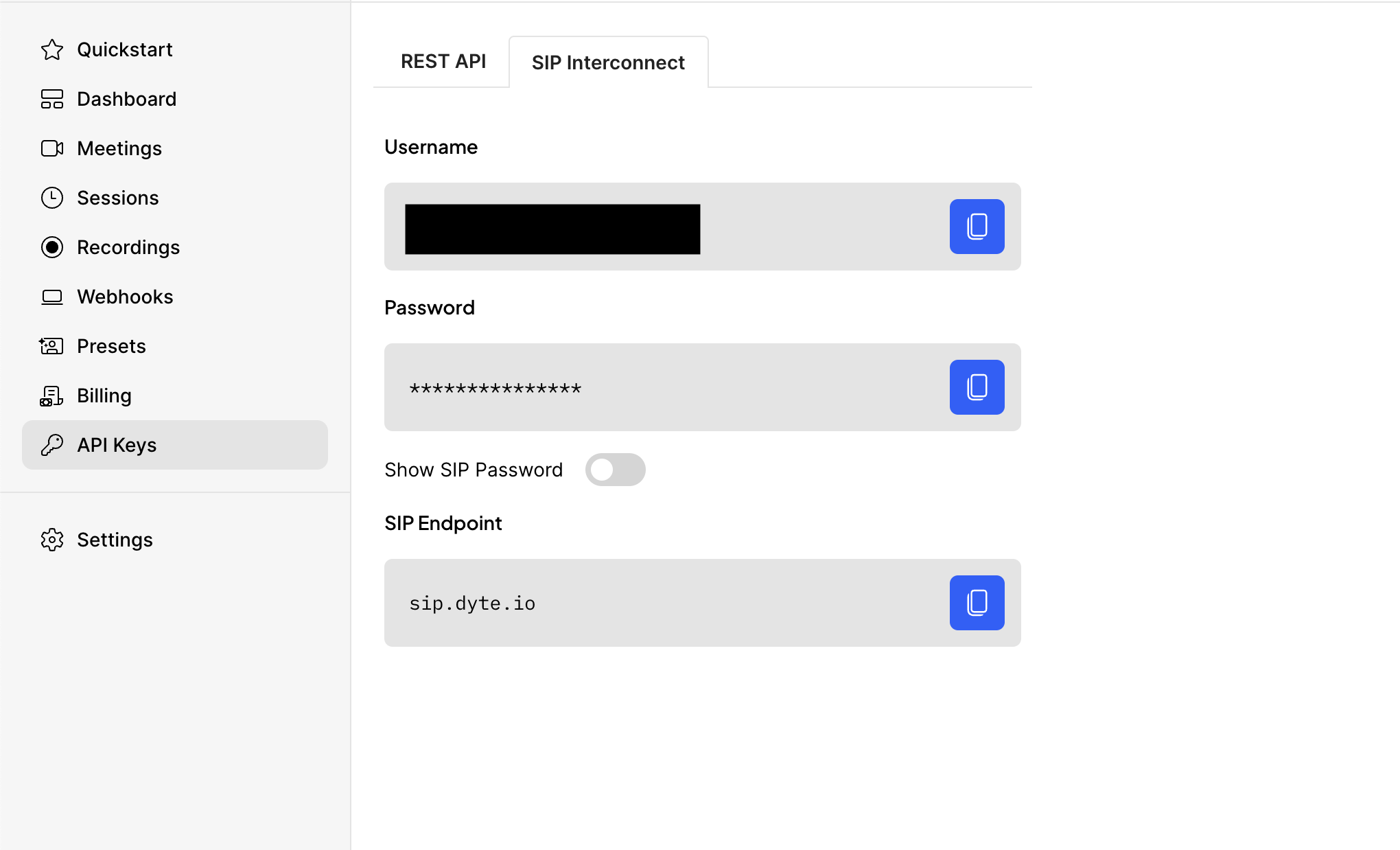SIP Interconnect
Introduction
Session Initiation Protocol (SIP) Interconnect refers to the setup where two or more different SIP-based networks or systems are connected to enable the flow of voice traffic between them.
Dyte's SIP Interconnect allows you to bridge VOIP calls from an external third party service to Dyte's WebRTC meetings. That means you can use SIP methodologies to connect with our SIP Servers and have it bridged to participants who might be connected through Dyte Client SDKs (WebRTC)
Usage
Get your SIP credentials from the Developer Portal in the API Keys section

This feature is in beta. Contact us to enable SIP Interconnect
Once you have the credentials, the simplest way to test the SIP Endpoint is using a SIP Client, you can use clients like Zoiper, Telephone(Mac only), etc.
Now to connect to a specific Dyte meetingId, you can dial in using SIP with the given username and password and an URI in the format sip:<meetingId>@sip.dyte.io
🎉 That is it, once you dial with the above credentials your SIP call should be bridged with Dyte's WebRTC meeting
Examples
Integration with Twilio Voice
To connect with Dyte we are going to use TwiML to perform the SIP dialin.
Guide
Steps to follow
- Get a Twilio account. You can go to https://www.twilio.com/try-twilio and create an account
- Buy a VOIP number
- Configure the VOIP number to use webhook to handle any incoming calls

- Now when you get a webhook, you can respond with a TwiML SIP Dial verb with Dyte's SIP configuration
<?xml version="1.0" encoding="UTF-8"?>
<Response>
<Dial>
<Sip username="<DyteSIPUsername>" password="<DyteSIPPassword>">sip:meetingId@sip.dyte.io</Sip>
</Dial>
</Response>
Express Example
const express = require('express');
const VoiceResponse = require('twilio').twiml.VoiceResponse;
const urlencoded = require('body-parser').urlencoded;
const app = express();
// Parse incoming POST params with Express middleware
app.use(urlencoded({ extended: false }));
// Create a route that will handle Twilio webhook requests, sent as an
// HTTP POST to /voice in our application
app.post('/voice', (request, response) => {
console.log({ request });
// Use the Twilio Node.js SDK to build an XML response
const twiml = new VoiceResponse();
const dial = twiml.dial();
dial.sip(
{
username: '<DyteSIPUsername>',
password: '<DyteSIPPassword>',
},
'sip:<meetingId>@sip.dyte.io',
);
// Render the response as XML in reply to the webhook request
response.type('text/xml');
console.log({ twiml: twiml.toString() });
response.send(twiml.toString());
});
Hurray 🎉, You have completed the Twilio Voice setup guide.